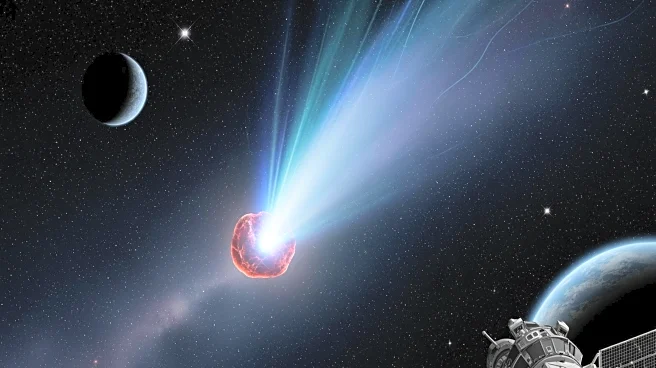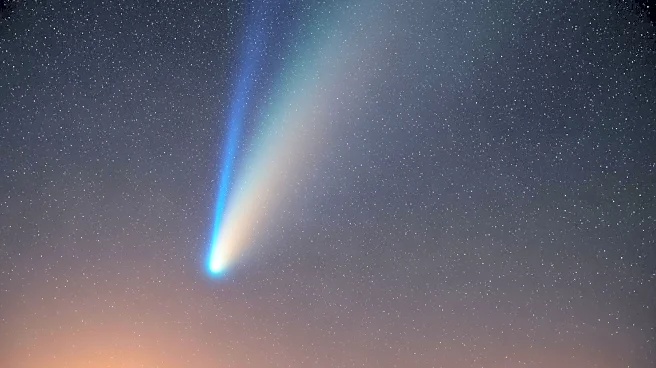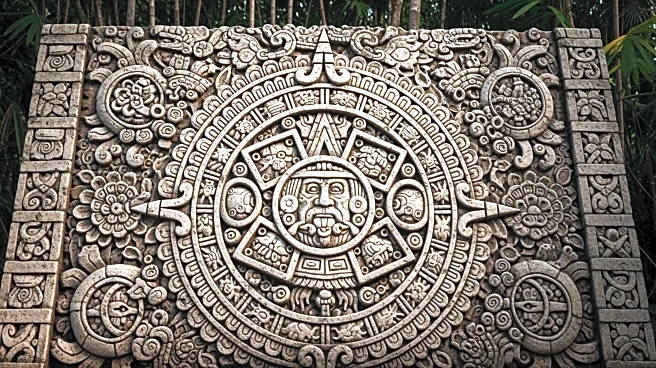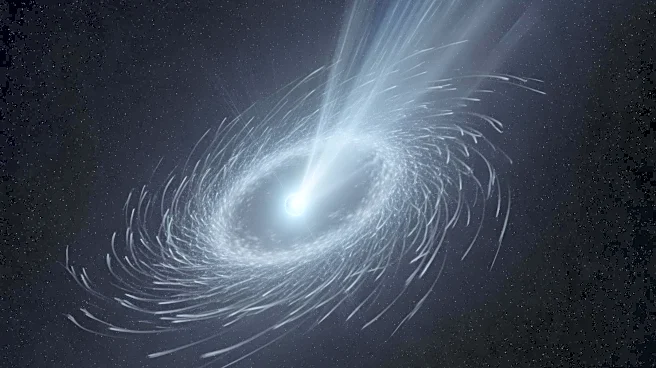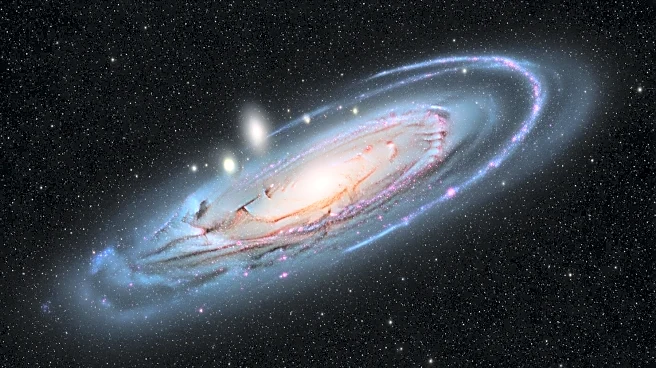What's Happening?
Recent research has uncovered that Aguada Fénix, the oldest and largest known Maya monument, was designed as a 'landscape-wide cosmogram' aligned with the sacred Tzolk'in calendar. This monument, built between 1050 and 700 B.C.E., is located in southeastern
Mexico and was discovered using airborne lidar technology. The study suggests that the monument's design reflects a deep connection to astronomy, predating the rise of centralized Maya polities. The site features an E Group layout aligned with solstitial sunrises, separated by 130 days, which is half of the 260-day sacred calendar. A cruciform ritual pit at the center contained pigments representing directional color symbolism, marking the earliest known expression of this concept in Mesoamerica. The research challenges previous assumptions about early Maya societal structure, proposing that calendrical specialists, rather than powerful rulers, organized these constructions by leveraging their astronomical knowledge.
Why It's Important?
The findings at Aguada Fénix provide significant insights into the early Maya civilization, suggesting that astronomy played a foundational role in their societal organization. This challenges the traditional view that large-scale, cosmically-aligned projects were only possible under centralized, king-led polities. The study indicates that early Maya society was likely organized by community leaders with specialized astronomical knowledge, who persuaded large-scale participation in construction and rituals. This has implications for understanding the development of social structures and leadership in ancient civilizations, highlighting the importance of shared cosmic beliefs in uniting communities. The research also suggests that the fascination with the cosmos was a blueprint for later Maya rulers, who derived authority from sacred calendrical and astronomical knowledge.
What's Next?
The study opens avenues for further exploration into the role of astronomy in early Maya society and its influence on later civilizations. Researchers may continue to investigate other ancient sites for similar cosmological alignments, potentially revising the understanding of leadership and societal organization in premodern cultures. The findings could also inspire new archaeological methods and technologies to uncover hidden structures and patterns in ancient landscapes. Additionally, the study may prompt discussions on the cultural significance of astronomy and its impact on social cohesion and identity in historical contexts.
Beyond the Headlines
The discovery at Aguada Fénix highlights the ethical and cultural dimensions of archaeological research, emphasizing the importance of respecting indigenous knowledge systems and cosmologies. It also raises questions about the long-term impact of astronomical beliefs on cultural development and identity. The study underscores the need for interdisciplinary approaches in archaeology, combining technology, history, and anthropology to uncover complex societal structures. Furthermore, it invites reflection on the role of shared beliefs in shaping human societies and the potential for such beliefs to foster unity and cooperation.


